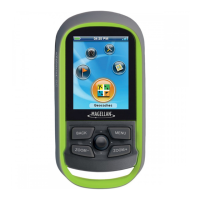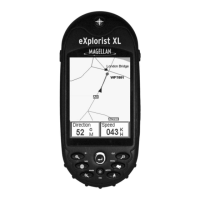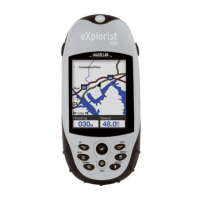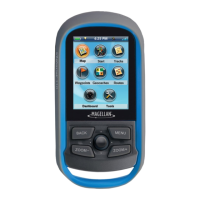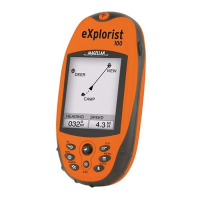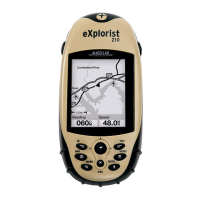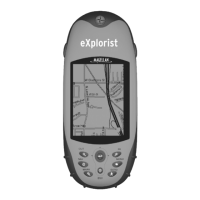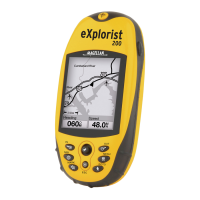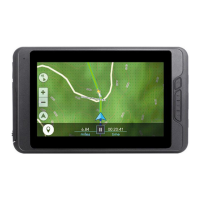7
Step
Two:
Where
Do
You
Want
To
Go?
Now
that
the eXplorist knows where
you
are,
you
need to tell
it
where
you
want to go.
There are many different ways you can do this, but the simplest and most commonly
used is a I'GOTO" route. This is a one-leg route with a beginning (where
you
are now)
and a destination (where you want to go). The destination is selected
by
using the
Points
of
Interest database. This database
has
two main options: positions
you
have
saved
(My
Points
of
Interest) or points of interest that have been preloaded into your
eXplorist (Background Map).
Creating a
GOTO
route is
as
simple
as
pressing the
GOTO
button and selecting the des-
tination from the poi nts of interest database.
Step
Three:
Calculating
Movement
As
you
move, your eXplorist is constantly calculating new positions, comparing the new
position to the previous position and calculati
ng
such things
as
heading and speed.
This is all done in the eXplorist's software communicating with the satellites and
is
instantaneously shown
on
your display.
Step
Four:
Providing
Directions
Your eXplorist constantly computes a direct line from your present position to your desti-
nation. From there,
it
will provide
you
instructions to guide
you
along
that
straight path.
Unless
you
are
on
a large body of water,
it
will
be
unlikely
that
you will
be
able to follow
these instructions exactly.
To
compensate for that, your eXplorist automatically updates
the route, providing
you
with up-to-date information about getting to your destination.
GOTO
routes are the simplest and most commonly used feature of your eXplorist
200.
With
just the
GOTO
button the eXplorist
wi
II
provide
you
with the tools needed to get to any poi nt of
interest stored in your database.
Another commonly used feature of the eXplorist is saving your position to the points of interest
database. This feature is accessed
by
pressing the
MARK
button. When saving your position,
you can also add attributes such
as
the icon or a name for the point of interest. This will help
you
to find this spot in the future when accessing
it
from the points of interest database.
Suppose
that
you have set up camp for the night. Tomorrow,
you
plan
on
doing some
nature exploring and
you
want to
be
able to come back
to
the
campsite when you are
done. Press the
MARK
button and set the name of the point of interest to "Camp".
After your
hiking
is done, simply use the
GOTO
button and select "Camp" from the list
of My Points
of
Interest. It's
that
simple to find your way back.
While out fishing
on
the lake,
you
come across the perfect spot for catching your
limit.
Next
year,
you want to
be
able to come back to
this
same spot. Turn
on
your eXplorist;
and after
it
has computed your position, press the
MARK
button to
save
it. This
time
you
can enter the name "Catfish
1"
and
save
your poi nt of interest. Next
year,
you can
be
back at the same hot spot with just a press of the
GOTO
button.
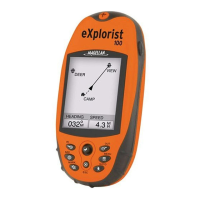
